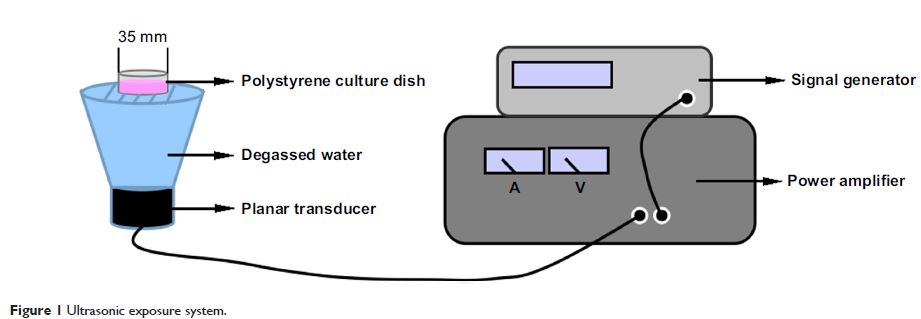108605
论文已发表
注册即可获取德孚的最新动态
IF 收录期刊
- 3.4 Breast Cancer (Dove Med Press)
- 3.2 Clin Epidemiol
- 2.6 Cancer Manag Res
- 2.9 Infect Drug Resist
- 3.7 Clin Interv Aging
- 5.1 Drug Des Dev Ther
- 3.1 Int J Chronic Obstr
- 6.6 Int J Nanomed
- 2.6 Int J Women's Health
- 2.9 Neuropsych Dis Treat
- 2.8 OncoTargets Ther
- 2.0 Patient Prefer Adher
- 2.2 Ther Clin Risk Manag
- 2.5 J Pain Res
- 3.0 Diabet Metab Synd Ob
- 3.2 Psychol Res Behav Ma
- 3.4 Nat Sci Sleep
- 1.8 Pharmgenomics Pers Med
- 2.0 Risk Manag Healthc Policy
- 4.1 J Inflamm Res
- 2.0 Int J Gen Med
- 3.4 J Hepatocell Carcinoma
- 3.0 J Asthma Allergy
- 2.2 Clin Cosmet Investig Dermatol
- 2.4 J Multidiscip Healthc

以金丝桃素介导声动力疗法对 THP-1 巨噬细胞进行诱导细胞凋亡的疗效和机理
Authors Li XS, Gao L, Zheng LB, Kou JY, Zhu X, Jiang YQ, Zhong ZY, Dan JH, Xu HB, Yang Y, Li H, Shi S, Cao WW, Zhao YJ, Tian Y, Yang LM
Published Date January 2015 Volume 2015:10 Pages 821—838
DOI http://dx.doi.org/10.2147/IJN.S75398
Received 4 October 2014, Accepted 26 November 2014, Published 22 January 2015
Purpose: To
investigate the sonoactivity of hypericin (HY), together with its sonodynamic
effect on THP-1 macrophages and the underlying mechanism.
Materials and methods: CCK-8
was used to examine cell viability. Confocal laser scanning microscopy was
performed to assess the localization of HY in cells, reactive oxygen species
(ROS) generation, and opening of the mitochondrial permeability transition pore
(mPTP) after different treatments. Apoptosis was analyzed using
Hoechst–propidium iodide and transmission electron microscopy. Mitochondrial
membrane potential (ΔΨm) collapse was detected via fluorescence microscopy.
Lipoprotein oxidation was determined in malondialdehyde (MDA) assays. Western
blotting was conducted to determine the translocation of BAX and cytochrome C
and the expression of apoptosis-related proteins.
Results: HY was sublocalized
among the nuclei and the mitochondria, endoplasmic reticulum, Golgi apparatus,
and lysosome in the cytosol of THP-1 macrophages. Under low-intensity
ultrasound irradiation, HY significantly decreased cell viability and induced
apoptosis. Furthermore, greater ROS generation, higher MDA levels, and greater
ΔΨm loss were observed in the sonodynamic therapy (SDT) group. Both ROS
generation and MDA levels were significantly reduced by the ROS scavenger
N-acetyl cysteine (NAC) and the singlet oxygen scavenger sodium azide. Most of
the loss of ΔΨm was inhibited by pretreatment with NAC, sodium azide, and the
mPTP inhibitor cyclosporin A (CsA). mPTP opening was induced upon SDT but was
reduced by pretreatment with bongkrekic acid,
4,4'-diisothiocyanatostilbene-2,2'-disulfonic acid disodium, CsA, and NAC.
Western blot analyses revealed translocation of BAX and cytochrome C, downregulated
expression of Bcl-2, and upregulated expression of cleaved caspase-9, cleaved
caspase-3, and cleaved poly(ADP-ribose) polymerase in the SDT group, which were
reversed by NAC.
Conclusion: HY mediated
SDT-induced apoptosis in THP-1 macrophages via ROS generation. Then, the
proapoptotic factor BAX translocated from the cytosol to the mitochondria,
increasing the ratio of BAX/Bcl-2, and the mPTP opened to release cytochrome C.
This study demonstrated the great potential of HY-mediated SDT for treating
atherosclerosis.
Keywords: apoptosis, hypericin,
sonodynamic therapy, mitochondria–caspase pathway, atherosclerosis
